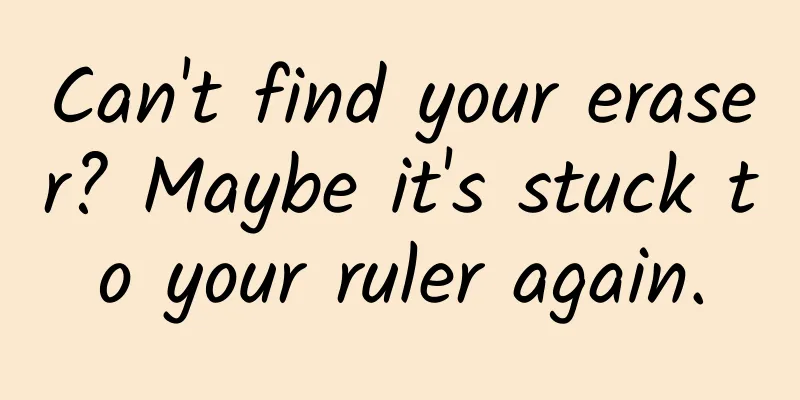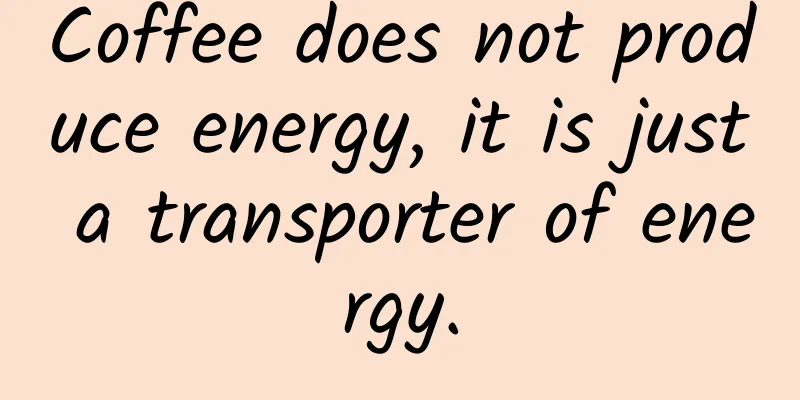Can't find your eraser? Maybe it's stuck to your ruler again.

|
If erasers and pencils are enemies, then erasers and rulers must be close friends. Because every time you open a pencil case, you will always see these two stuck together: What is the "love-hate relationship" between erasers and plastic rulers? Why does the ruler get "gnawed" off when they stay together, or why do erasers and plastic rulers become "conjoined twins"? Image source: Made by the author 01The past and present of plastic rulers and erasers Plastic is a general term for a class of high molecular polymers, with a wide variety of uses. Most of our common plastic rulers, plastic pen holders and other stationery are made of high molecular materials such as polyethylene (PE), polypropylene (PP), and polyvinyl chloride (PVC). As for erasers, everyone is familiar with them. They are mainly used to erase pencil marks. They are usually made of rubber or plastic (such as PVC), but in order to make the eraser softer, we also add filler oil , plasticizers and other ingredients to it. Image source: Made by the author So why do erasers have a special liking for plastic rulers? In fact, this stems from the similarity of their material properties. The filler oil and plasticizer in the eraser are like its "lubricant", and they particularly like to "deal with" plastic molecules. When the eraser and plastic are put together, the filler oil and plasticizer will start to "work". They will penetrate between the plastic molecules, weaken the interaction between the molecules, and make the plastic molecules easier to move and rearrange. In this way, the boundary between the eraser and the plastic becomes blurred, as if they were glued together. Image source: Made by the author 02Is it a physical change or a chemical reaction? In order to find the answer, we have to first talk about the "like dissolves like" principle of polymer materials. The so-called like dissolves like means that solutes composed of polar molecules are easily soluble in solvents composed of polar molecules, and solutes composed of non-polar molecules are easily soluble in solvents composed of non-polar molecules. Rubber and plastic are both high molecular polymers, and they have certain similarities. The filler oil and plasticizer in the rubber act as "solvents" that can penetrate between plastic molecules and weaken the interaction between molecules, thereby achieving "dissolution". However, this "dissolution" does not change the chemical properties of the plastic, but only changes its physical state . Image source: Made by the author Therefore, this is actually a physical change: the plastic is still the same plastic, but its intermolecular interaction force has been weakened, causing it to "stick" to the rubber - that is, the intermolecular interaction force has changed, but no chemical reaction has occurred. 03Can the marks left by the eraser be erased? The eraser has stuck to the plastic ruler or left marks. Is there any way to remedy this? This depends on the specific situation. If the eraser and the plastic are only slightly "stuck" together, it can be easily solved with some daily items. For example: Alcohol, lemon juice, white vinegar : These "sour" guys are the nemesis of eraser marks. They can dissolve the filling oil and plasticizer in the eraser, thereby weakening the interaction between the eraser and the plastic. Dip a cotton swab in a proper amount of alcohol, lemon juice or white vinegar, and gently wipe the plastic surface to remove the eraser marks. lemon juice Image source: Photo Network Hot water, ice cubes : Hot water can make plastic molecules "relax their vigilance", while ice cubes can make rubber molecules "calm down". Soak the plastic parts in hot water for a while, or freeze the rubber and plastic together in ice cubes for a while, and then try to separate them. Ice cubes Image source: Photo Network Baking soda, glycerin, lubricant : These "universal helpers" can also help you solve your troubles. Baking soda can remove stains and oil stains on the plastic surface; glycerin can moisturize the plastic surface, making it easier to separate from the rubber; lubricant can reduce the friction between the rubber and plastic, making them easier to separate. After treating the plastic surface with these items, wipe it clean with a cloth. Baking Soda Image source: Photo Network However, if the eraser and plastic are already "sticky", the above method may not work. At this time, we may need to use some professional tools or methods to solve this problem. For example: Hair dryer : Use a hair dryer to blow hot air into the gap between the rubber and the plastic, causing the plastic molecules to "expand and contract" and thus be easier to separate from the rubber. (Note that the hair dryer should not be too close to avoid deformation or burning of the plastic.) Hair dryer Image source: Photo Network Knife : If the adhesion between the eraser and the plastic is stubborn, you can use a knife or blade to gently scrape off the eraser marks. (Be careful when using a knife to avoid scratching the plastic surface or hurting yourself!) blade Image source: Photo Network Professional cleaners : There are some cleaners on the market that are specifically designed to remove stains and oil stains on plastic surfaces. You can choose a cleaner that suits you to deal with eraser marks. (Remember to read the instructions before use!) Cleaning Agents Image source: Photo Network 04How to avoid “intimate contact” between eraser and plastic? Since erasers and plastics are prone to "intimate contact", is there any way to avoid this? Of course there is! Here are some tips: Separate storage : The easiest way is to store erasers and plastic stationery separately! Put them in different pencil cases or drawers to prevent them from having close contact. Use a special eraser : Some erasers are specially designed to erase pencil marks. They usually do not contain filler oils or plasticizers, so they are less likely to stick to plastics. Choose stationery made of different materials : If you are really worried about the adhesion between erasers and plastic, you can choose stationery made of different materials. For example, use wooden pencils and metal pen holders to replace plastic pencils and plastic pen holders; or use erasers made of other materials to replace PVC erasers, etc. There are scientific principles hidden behind seemingly insignificant phenomena in life. As long as you are willing to discover and explore, you can gain a lot of fun and knowledge! References [1] Jing Weiben. A brief analysis of the “like dissolves like principle”[J]. Teaching and Management, 1986, (02): 75-76+78. [2] Liu Shuai, Zou Guohua, Deng Yang, et al. A brief discussion on the connotation and partial application of the principle of like dissolves like[J]. Chemical Education (Chinese and English), 2021, 42(11): 60-64. DOI: 10.13884/j.1003-3807hxjy.2020060181. Author: Zhou Wending, undergraduate student of the Department of Physics, East China Normal University Planning & Editing: Rain Acknowledgements: Guo Weihong, PhD and senior engineer at University of Chinese Academy of Sciences, provided scientific guidance for this article. |
<<: Are we heading for the coldest winter yet?
>>: Gaining weight, fatigue, lethargy...may be caused by a lack of this vitamin
Recommend
Check the investment price of Zibo Men's Wear Mini Program. How much is the investment price of Zibo Men's Wear Mini Program?
How much does it cost to attract investment in th...
Sales volume is only 1/50 of iPhone. Is Google really not giving up on Pixel phones in order to challenge Apple and Samsung?
As the successor of the NEXUS phone, a heavyweight...
The U.S. Army's key project, the Integrated Visual Augmentation System, a key part of the future warrior, has been suspended
According to reports from foreign military websit...
Did the first fatal accident sound the death knell for Tesla's autonomous driving technology?
The U.S. government announced on June 30 that the...
Australia bans artificial stone, causing incurable diseases for 600 people
Recently, Australia announced at a conference tha...
Why are used car e-commerce companies so keen on "advertising"?
Starting from a few days ago, you can already see...
12 tips for writing titles for new media operations!
Writing a headline is like having a difficult lab...
Tips for creating hot headlines for Toutiao today!
There is a sentence in the "Copywriting Trai...
Zhihu's "Wilson Formula" recommendation algorithm!
If operators or creators want their content to at...
California dealers try to block Volvo's car subscription service
A trade group representing California car and tru...
Seres Financial Report: Seres' Revenue in 2024 Will Be 145.176 Billion Yuan, a Year-on-Year Increase of 305.04%, a Record High
According to recent news, SERES disclosed its 202...
Why is this little bird wearing a “black mask”?
A bird's eye view of science Quanzhou Associa...
Huawei Honor 6 Indian media review: Reawaken your iPhone 4 memories
According to reports, Huawei Honor 6 has recently...
Cancellation and exceptions in coroutines | Introduction to core concepts
In previous articles, we shared with developers s...
These New Year gifts! Awesome!
During the Spring Festival A "cosmic-level&q...









